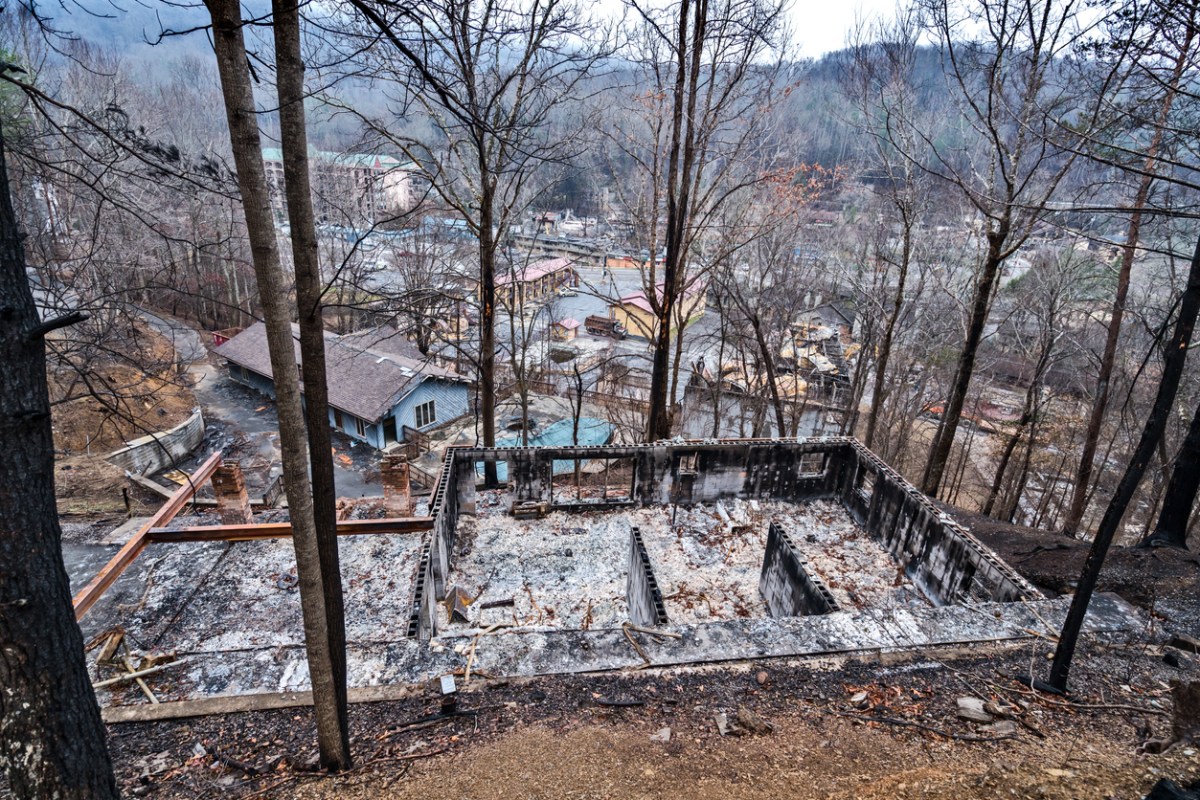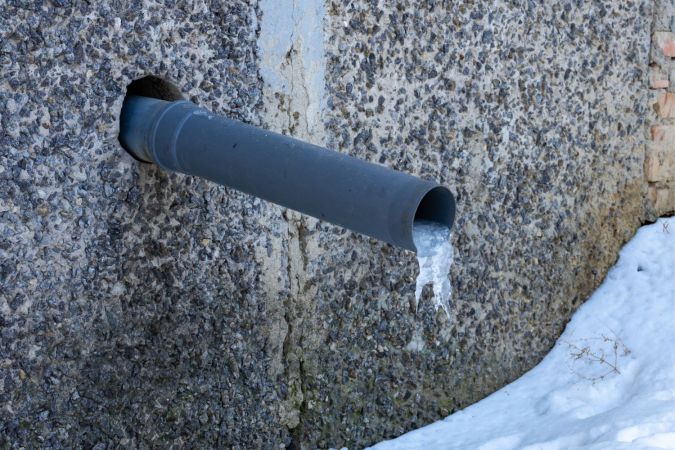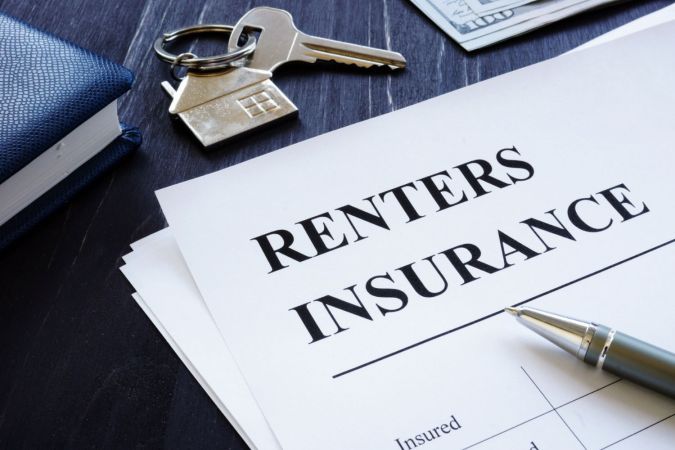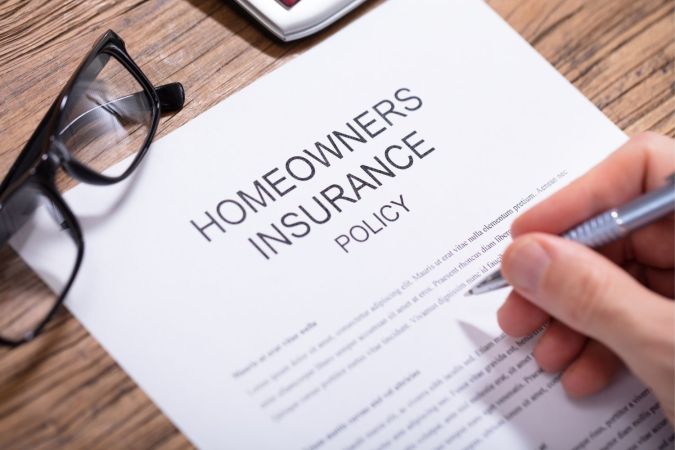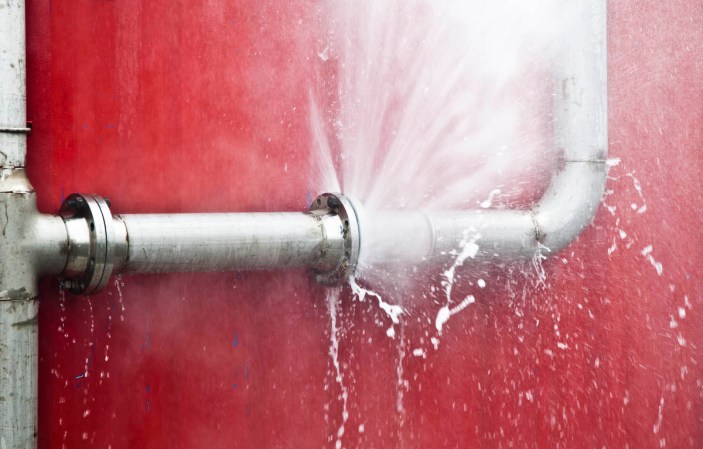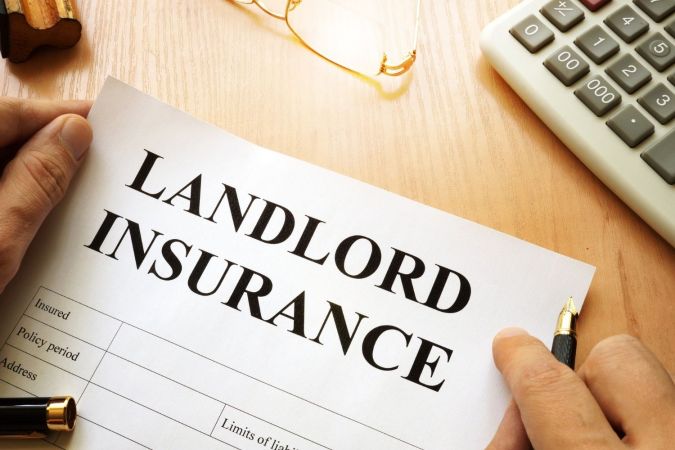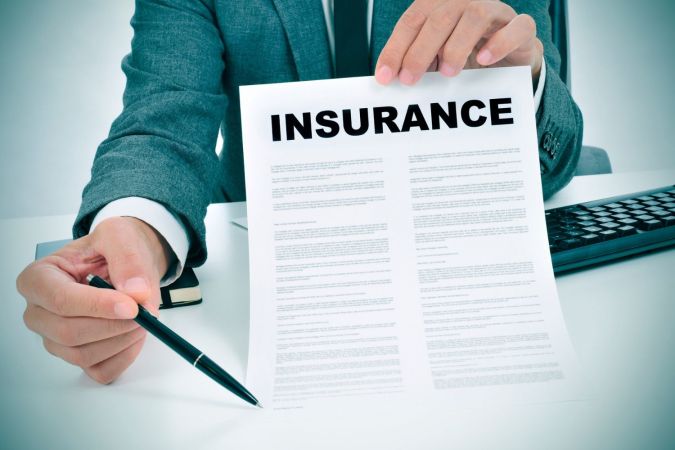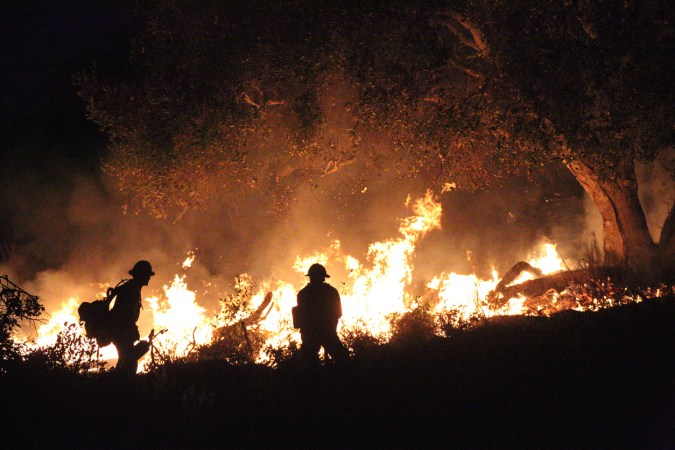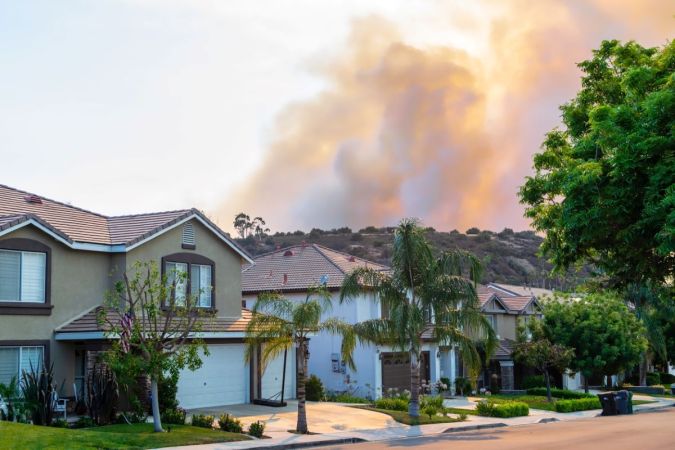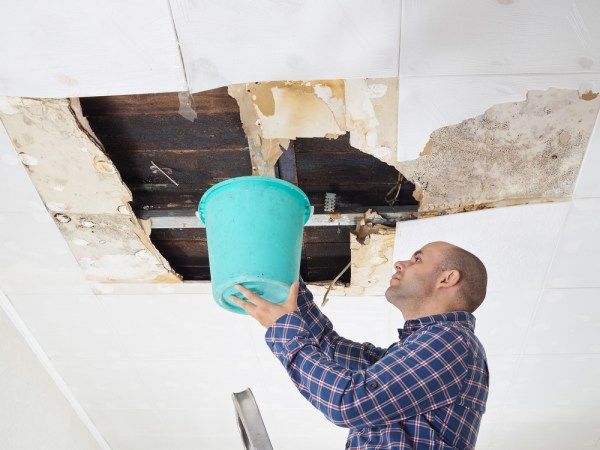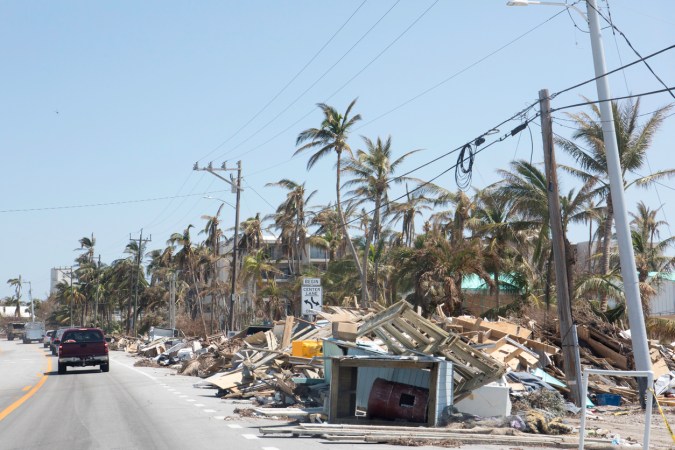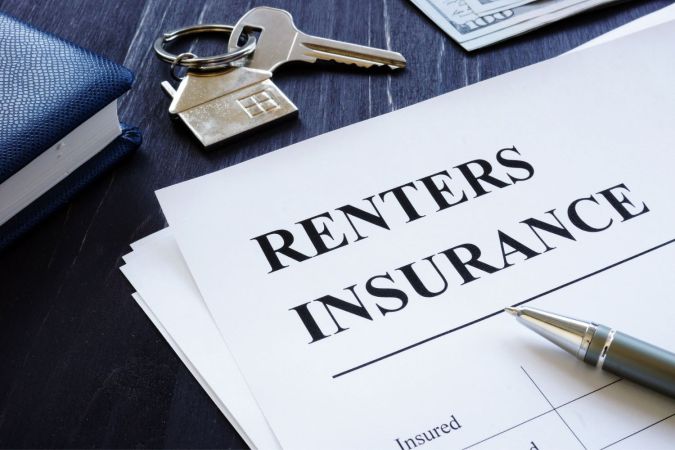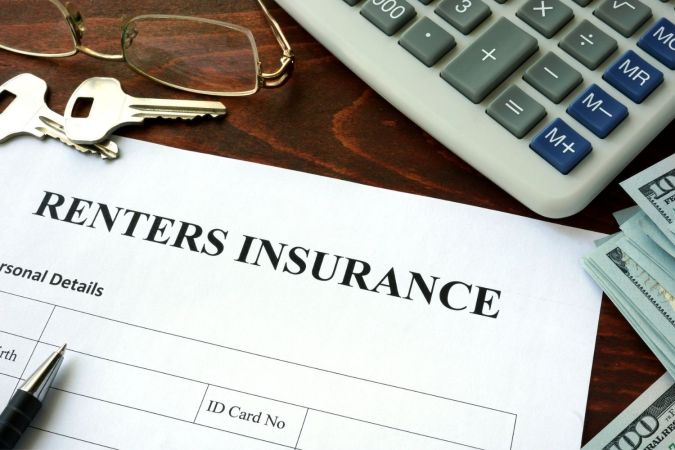We may earn revenue from the products available on this page and participate in affiliate programs. Learn More ›
Q: Over the past few years, the region around my home has seen more and more wildfires. I’m starting to worry my house could be at risk. If a wildfire damages my home, does homeowners insurance cover wildfires?
A: Living in an area with wildfire activity can make homeowners nervous. Wildfires move fast, and just a slight change of wind can send a wildfire into a neighborhood, causing damage to homes. For homeowners in fire-prone areas, the question “Does homeowners insurance cover wildfires?” comes up each fire season. The good news is that homeowners insurance typically covers fires—including wildfires.
However, some insurance companies don’t extend wildfire coverage in certain geographic areas. Homeowners can reduce their chances of a denied wildfire claim by working with the best homeowners insurance companies like Allstate and carefully reading their policies.
In general, homeowners insurance covers wildfire damage to a home.
Standard homeowners insurance policies generally include coverage for fire damage. In most cases, this includes insurance for wildfires and their resulting damage. Homeowners in geographic regions that are prone to wildfires, however, may find it more difficult to get a policy with wildfire insurance.
As long as the policy includes wildfire coverage, the homeowner can usually file a claim for any damages caused by wildfires. Coverage generally extends to other structures on the property as well as the personal belongings of the homeowner.
Renters might also wonder, “Does renters insurance cover wildfires like homeowners insurance?” A renters insurance policy won’t cover the structure of the home—that’s what the landlord’s insurance is for. However, most renters insurance policies cover the cost (less the deductible) to repair or replace a tenant’s personal belongings if they’re damaged by wildfires.
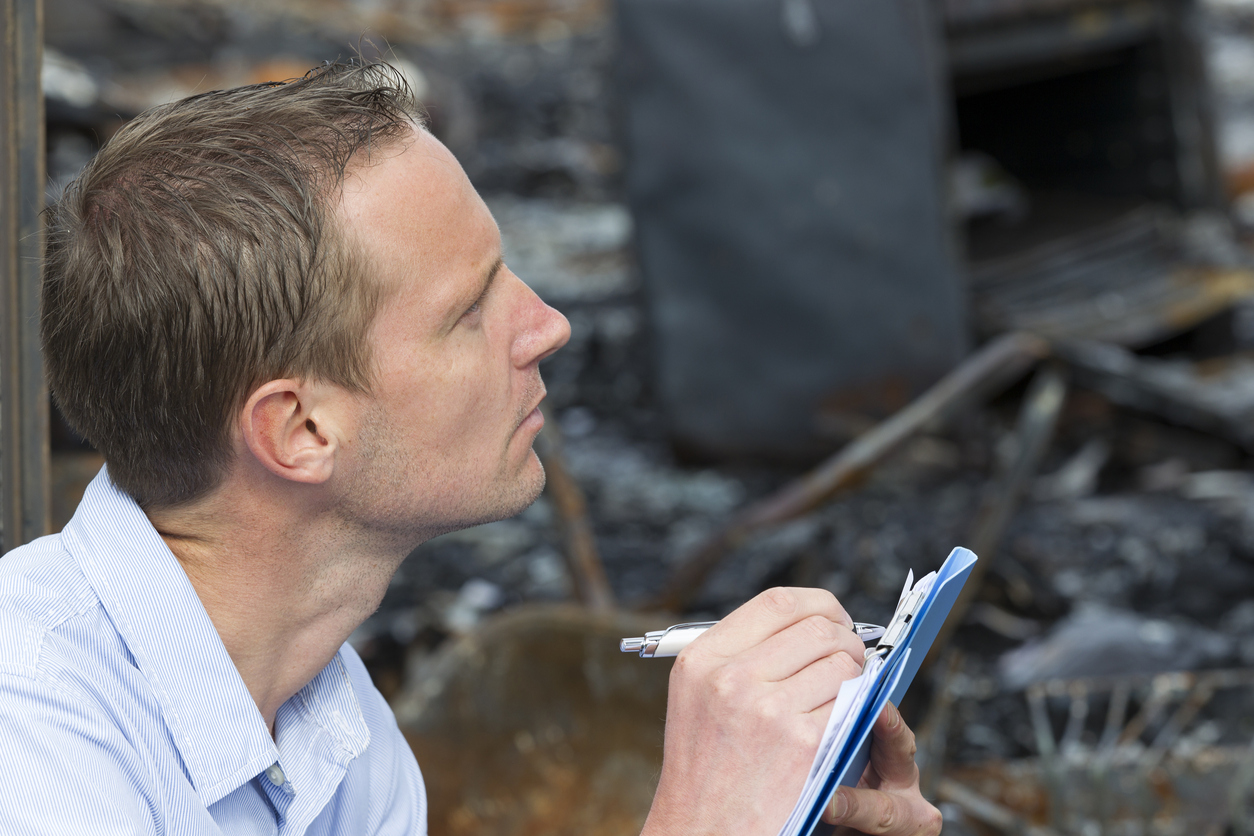
Dwelling coverage can help cover the costs of repairing or rebuilding the home and any attached structures following a wildfire.
Dwelling coverage is one of the most important parts of a standard homeowners insurance policy. This coverage helps pay to repair or rebuild the structure of a home after damage from a covered peril, such as a wildfire. If a wildfire causes a wall to collapse in a home, for example, the insurance policy should pay to cover the repairs.
A homeowners insurance policy’s dwelling coverage also covers any structures attached to the main living space, less the deductible. For example, the coverage protects decks or an attached garage from the cost of wildfire damage.
The dwelling coverage limit on an insurance policy generally refers to the maximum amount of money the insurance company will pay to rebuild a home. However, a natural disaster like a wildfire can drive up construction costs in an area as multiple homeowners try to rebuild at the same time. Higher construction costs in an area that’s been affected by a wildfire can mean a homeowner’s coverage limit is too low to cover the actual cost of repairing or rebuilding after a wildfire.
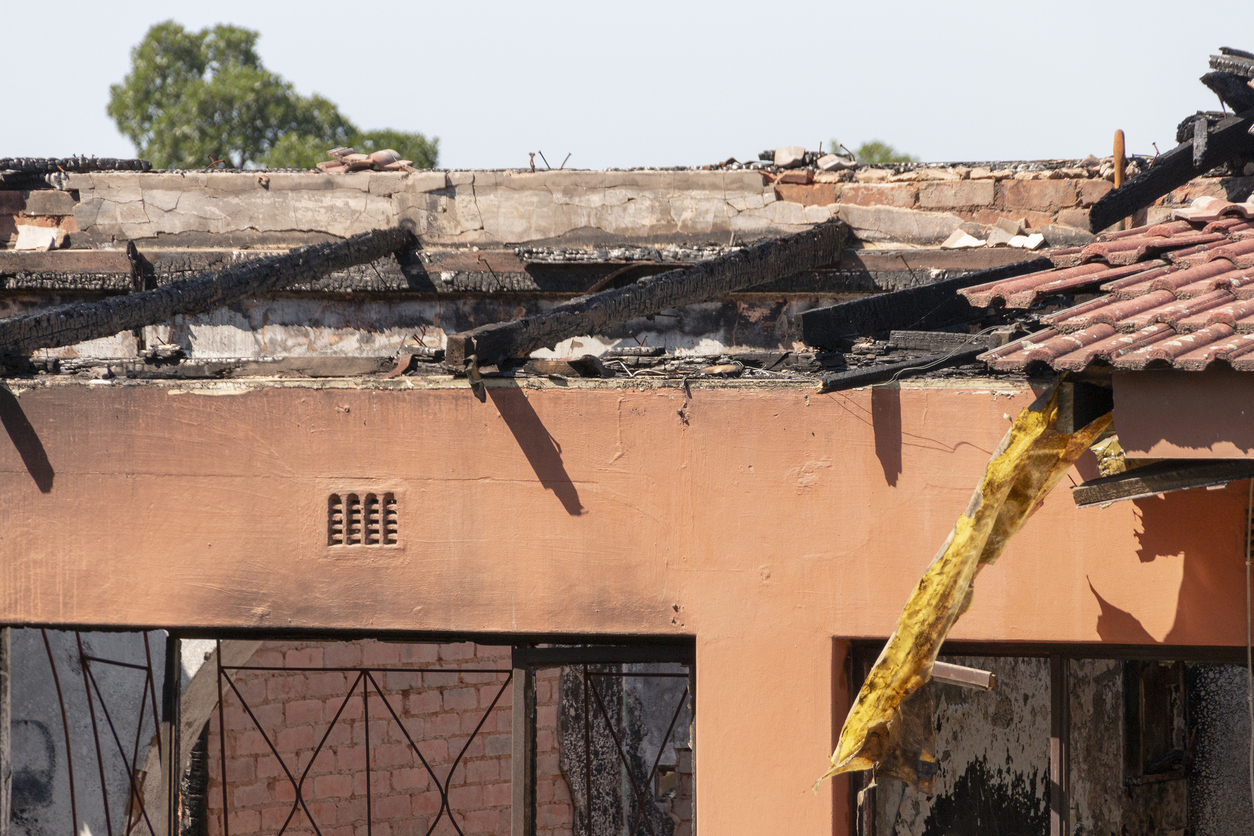
Homeowners may want to consider extended replacement cost or guaranteed replacement cost coverage to more fully protect their homes.
If construction costs after a wildfire put a homeowner over their coverage limit, they may have to cover inflated repair costs on their own. Homeowners can lower the chance of not having enough coverage through one of two additions to a homeowners insurance policy—extended replacement cost or guaranteed replacement cost coverage.
Extended replacement cost coverage provides a certain percentage of additional dwelling coverage. Say, for example, a homeowners insurance policy limit is $500,000. The homeowner adds extended replacement cost coverage of 25 percent, which means the policy will cover up to $125,000 more, or $625,000. Extended replacement cost coverage is often a safety net for homeowners if wildfire damage in the area temporarily increases construction costs.
Guaranteed replacement cost coverage offers homeowners even more protection than extended replacement cost. With guaranteed replacement cost coverage, the home is rebuilt regardless of the current cost of materials.
Other structures coverage can help pay to repair or rebuild unattached structures, such as sheds, fences, and detached garages.
Many homeowners have additional structures on their property. Garden sheds, detached garages, and even inground pools could sustain damage in a wildfire. Homeowners insurance policies help protect these structures as well through other structures coverage.
The limit for other structures coverage is usually a percentage of the policy’s dwelling coverage limit. For instance, a homeowner has a $300,000 dwelling coverage limit and the other structures coverage is 10 percent of the dwelling coverage limit. If a wildfire damages the homeowner’s detached garage, the policy could pay up to $30,000 to help repair or rebuild the damaged structure.
Homeowners with expensive outbuildings will want to consider other structures coverage limits when shopping for a homeowners insurance policy. For example, $30,000 may not be enough to replace a detached garage made of premium building materials. In that case, the homeowner may want to see whether they can increase their coverage for other structures on their property.
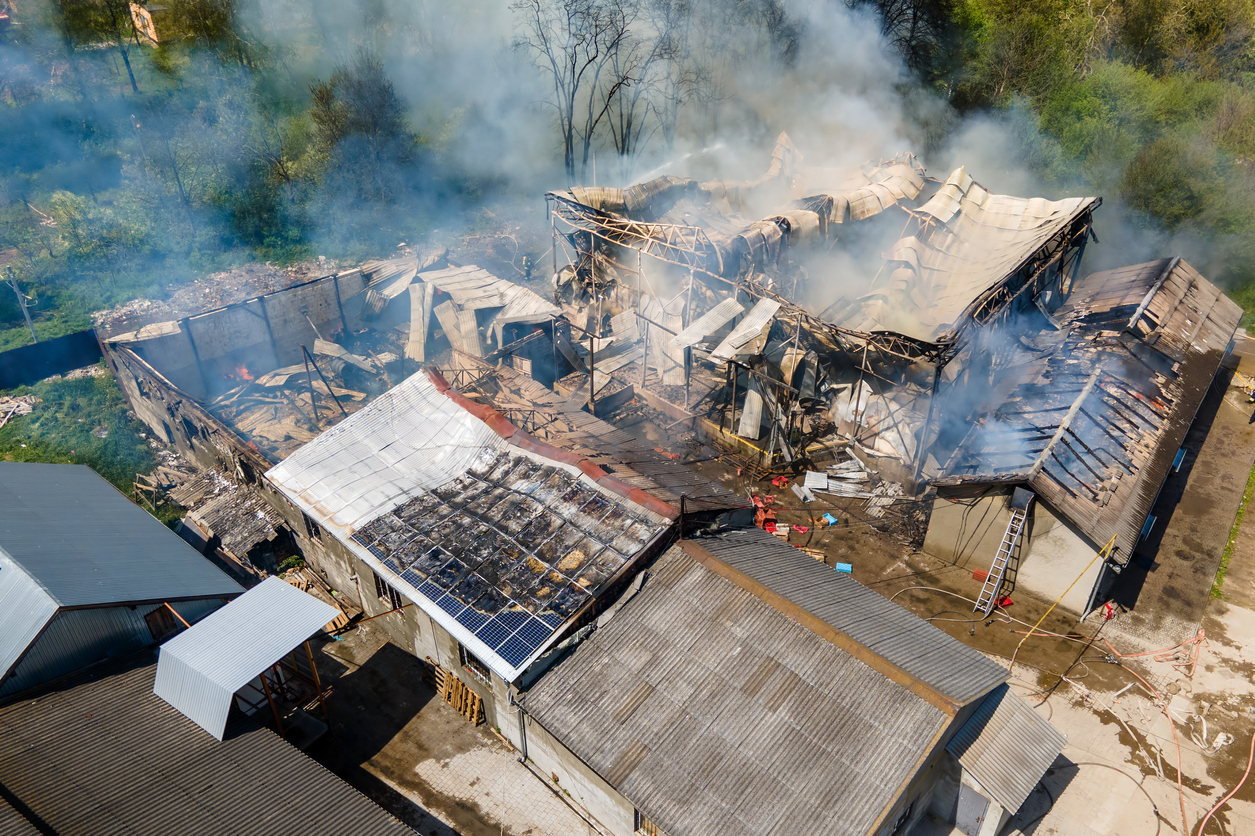
Personal property coverage helps pay to repair or replace the homeowner’s personal belongings if they are damaged or destroyed.
Wildfires often cause damage to much more than the structure of a home. The items inside the home may even have more personal value to a homeowner than the building itself. The personal property coverage portion of a standard homeowners insurance policy covers the homeowner’s belongings.
Personal property coverage includes almost anything belonging to a homeowner, such as furniture, clothing, and electronics. Most policies set the coverage limit at around 50 to 75 percent of the policy’s dwelling coverage. If a policy has a dwelling coverage limit of $300,000 and a 50 percent personal property limit, the policy could pay up to $150,000 to repair or replace the homeowner’s personal belongings.
Certain categories of belongings have additional coverage limits. Fine art or expensive jewelry, for example, may require additional coverage to cover the high cost of replacement. Homeowners with such items will want to speak with their insurance agent to determine what additional coverage they need for their valuable personal items to ensure certain high-value personal items are adequately covered.
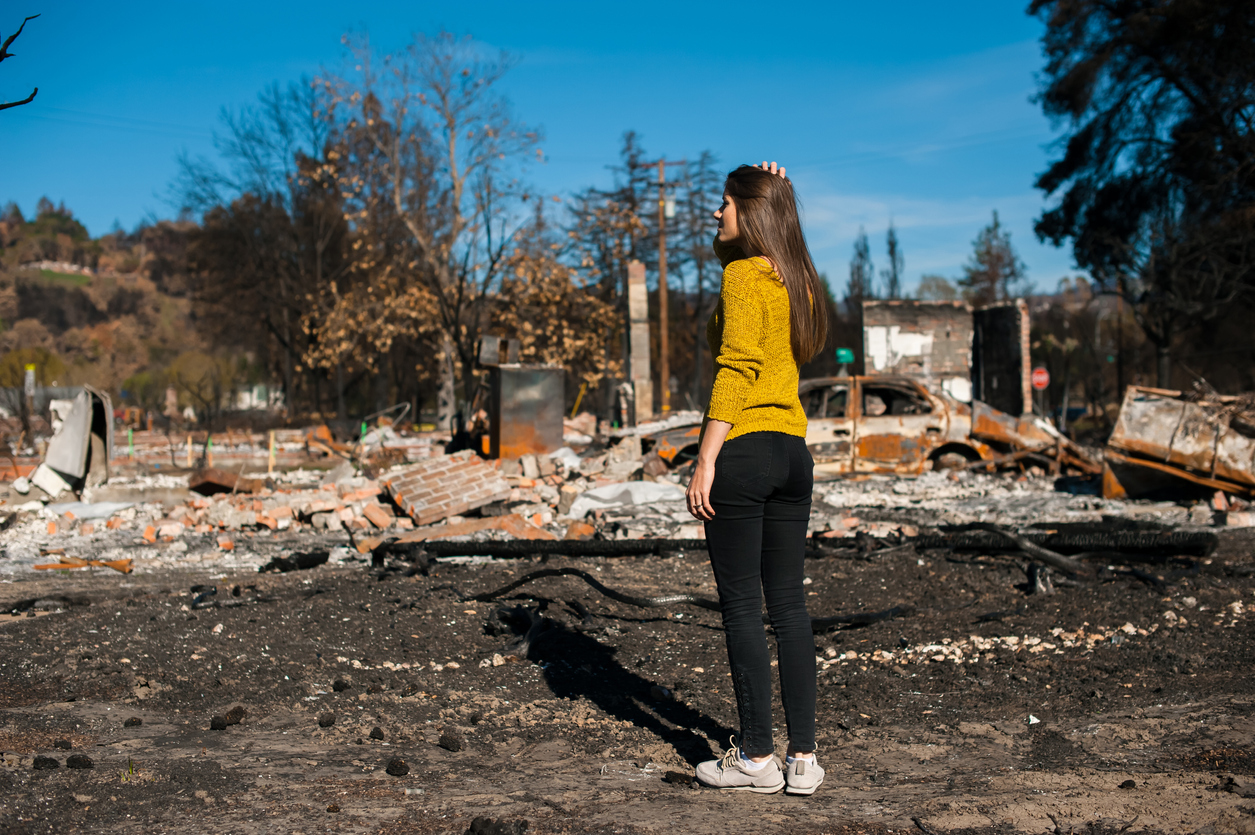
Additional living expense coverage can help pay for temporary accommodations and other expenses if the homeowner is required to relocate during repairs.
Wildfire damage to homes often leaves them uninhabitable. Severe fire damage can cause dangerous conditions, such as damage to wall supports. In the event of a wildfire, homeowners often have to relocate temporarily. Homeowners insurance policies with additional living expense coverage help reduce the cost of relocating.
Additional living expense coverage—also called loss of use coverage—reimburses homeowners for certain living costs if they can’t live in their home. This usually includes the cost of a hotel or rental property as well as restaurant or grocery bills. Loss of use coverage may also reimburse homeowners for expenses such as transportation or laundry.
It’s important to note that loss of use coverage pays for the additional costs of living a homeowner might face living outside of their home. It doesn’t cover the normal living costs. For example, a displaced homeowner may typically spend $100 a week on groceries, but their costs have gone up to $200 living outside of their home. Their loss of use coverage might pay for the additional $100 per week in living costs, but it wouldn’t cover the full cost.
Homeowners can also make a claim under their additional living expenses coverage if they are under a mandatory evacuation, even if the fire doesn’t reach their home.
Many homeowners are surprised to learn they may qualify for an additional living expense claim even if a wildfire doesn’t reach their home. If local authorities require evacuation, homeowners may be able to file a wildfire claim.
Like other types of coverage, additional living expense coverage is usually a percentage of the policy’s total dwelling coverage limit. For example, a homeowner with a $500,000 dwelling coverage limit has a 25 percent limit for additional living expenses. If they’re told to evacuate, they can receive up to $125,000 in additional living expense coverage after the deductible has been met.
Most homeowners insurance policies let policyholders increase their additional living expenses coverage for an additional fee. This could be beneficial for homeowners in areas with a high cost of living. If a wildfire causes significant damage to their home and displaces them for months, the increased coverage could help cover higher living expenses.
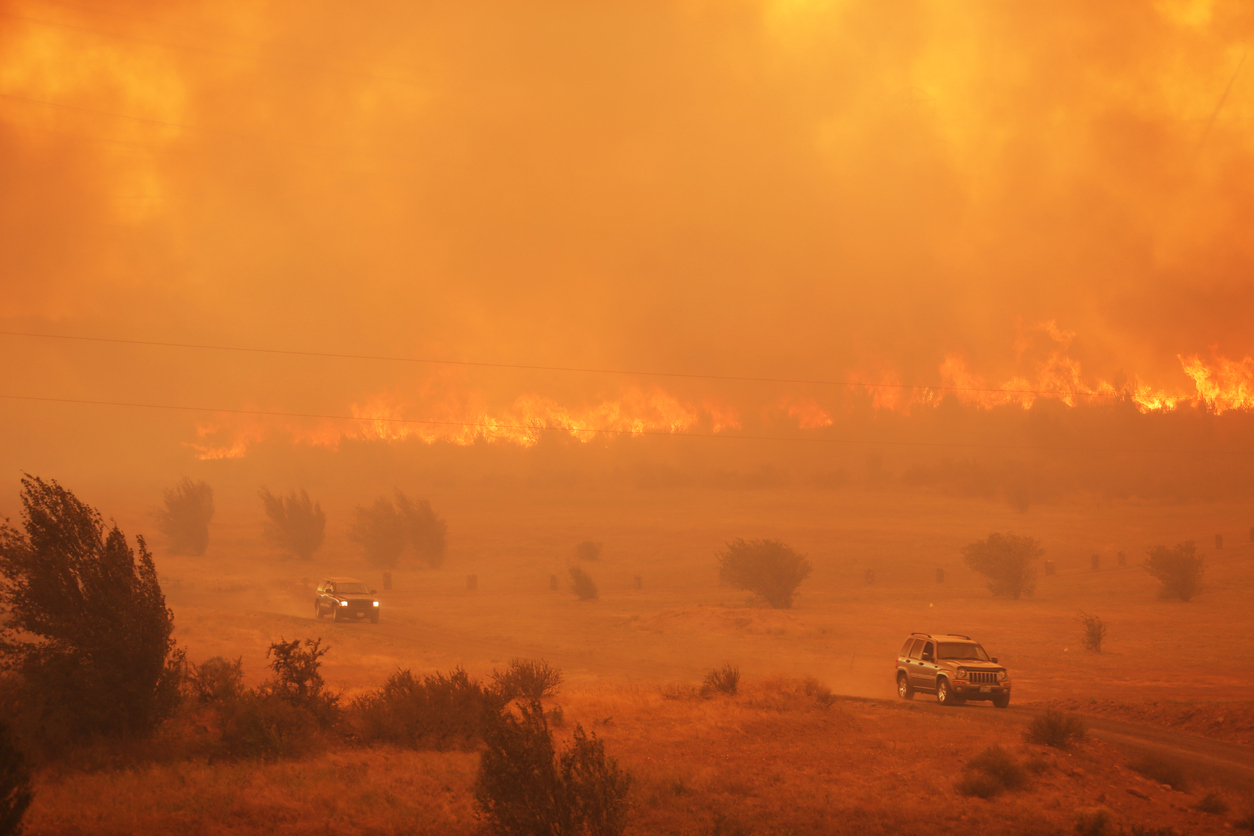
Homeowners insurance may provide coverage for landscaping that’s damaged by a wildfire, such as lawns, trees, and shrubs.
Many homeowners take a lot of pride in the lawn and landscaping around their homes. Professional landscaping can be expensive, making a full landscape design a large investment. If a wildfire comes through and damages the landscape, the cost of replacement could potentially be thousands of dollars.
Like other structures coverage, most homeowners insurance policies offer insurance for landscaping. This usually includes trees, shrubs, and bushes on the property.
However, coverage limits vary among policies. The limit is generally a percentage of the total dwelling coverage limit, but many policies place additional limits on specific items. For example, a policy may have limits for individual plants, which means the policy won’t pay above a certain amount for each plant that needs to be replaced.
If the home sustains smoke damage but no fire damage, the homeowner may still be able to make a wildfire smoke claim.
Wildfires can damage homes even if the fire never makes it to the property. Smoke from wildfires can cause damage miles away from the actual flames. Thick, stagnant smoke from a wildfire could make a house unlivable, ruin clothing and furniture, or damage walls and carpets. Homeowners dealing with smoke from a nearby wildfire may be able to file a wildfire claim with their homeowners insurance company.
Many homeowners insurance policies cover damage from wildfire smoke in addition to damage from wildfire flames. For example, if smoke from a nearby wildfire damages the carpet in a home, the homeowner can file a wildfire smoke claim with their insurance company. The insurance company may pay to have a smoke mitigation company clean or replace the carpeting after the deductible has been met.
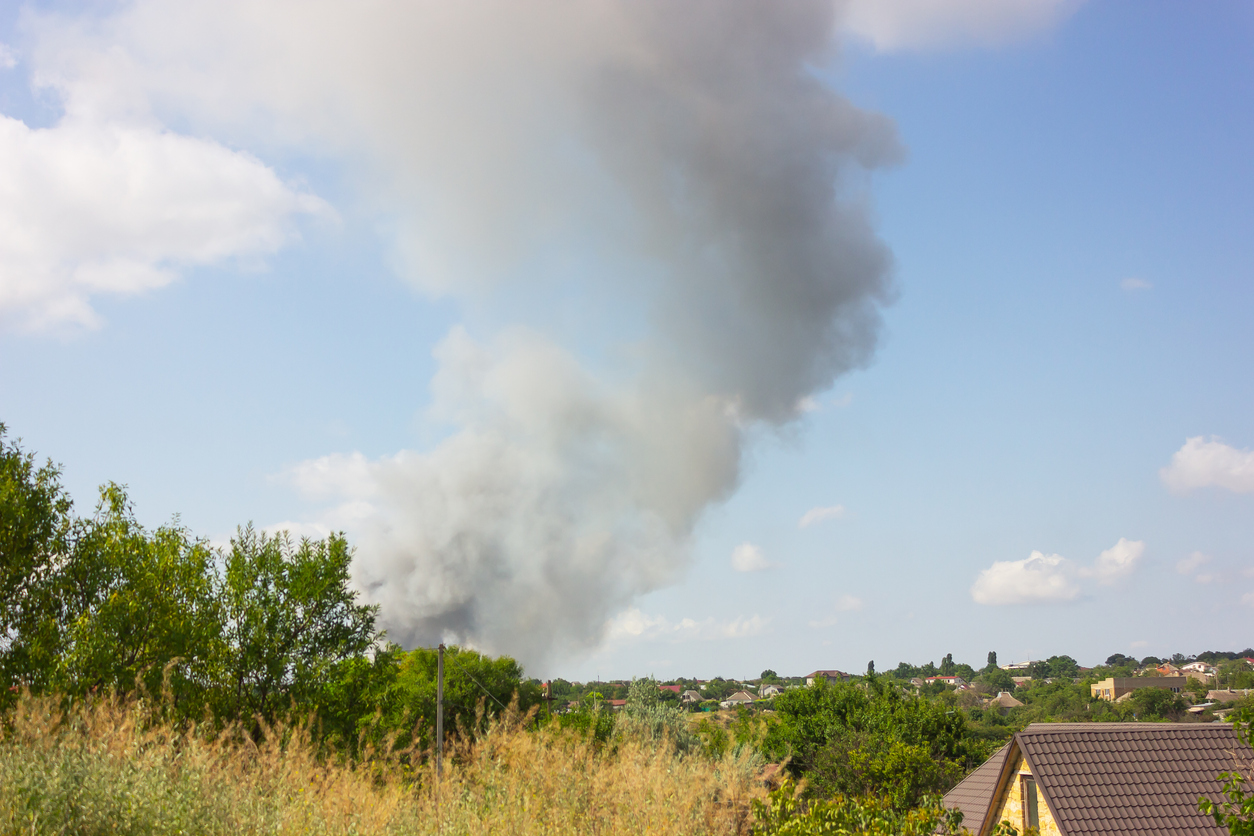
Insurance companies use fire protection classes to determine the home’s risk of burning in a wildfire.
Fire protection classes categorize local areas by the ability of local fire protection services to respond to a fire. This classification process helps homeowners insurance companies determine the risk level for a particular home. A home in a town with a high fire protection class rating is more protected than one in an area with a low fire protection class rating.
In general, the higher the risk of fire damage, the higher a homeowner’s premium. For example, a home down that has a fire hydrant in front of the property and is just down the road from a fire station is more protected than a home in a rural area that’s miles from the nearest fire station. The homeowner near the fire station may pay less for homeowners insurance coverage than the rural homeowner.
Insurance companies rate fire protection classes from 1 to 10, with 1 being the most protected. Many factors affect the class rating, including the number of fire trucks available, the amount of available water per minute, and firefighter response time.
Insurance premiums and other costs can be higher in areas prone to wildfires, and some insurance companies may decline to write policies in those areas.
Homeowners insurance companies use the risk of loss to determine the cost of homeowners insurance. Homes in regions with a higher risk of wildfire damage, such as dry, desert areas of the western United States, are less attractive prospects for insurance companies. Therefore, insurance companies mitigate the potential risk by charging homeowners higher premiums.
One of the most important things a homeowner will want to consider when shopping for a home in a wildfire-prone area is their access to affordable homeowners insurance. In areas with severe fire risk, it may be difficult to find any wildfire coverage, as some insurance companies exclude wildfire coverage in these areas. Some simply don’t do business in areas with wildfire risk.

Homeowners who are unable to find insurance coverage in their area may be able to access a policy from their state’s Fair Access to Insurance Requirements (FAIR) Plan.
Fair Access to Insurance Requirements (FAIR) Plans help homeowners who live in areas with an increased risk of natural disasters, such as wildfires, get insurance coverage. These plans are generally a last resort when a homeowner can’t find traditional homeowners insurance. Homeowners might not qualify for FAIR Plans until a specified number of private insurance companies deny their insurance applications.
Coverage from FAIR Plans tends to be less comprehensive than that from private insurance companies. For example, FAIR Plans usually have lower coverage limits than private policies. The premiums for FAIR Plans are generally higher than those of traditional insurance coverage. This means the homeowner might have to pay more for less coverage than with a traditional policy.
Alternatively, homeowners may be able to get coverage through an excess and surplus lines insurer, though it will likely be expensive.
Another option for homeowners who can’t find traditional homeowners insurance due to wildfire risk is to contact an excess and surplus (E&S) insurance company. Excess and surplus insurers specialize in insuring properties with higher risks than most traditional insurance companies will take. For example, an E&S insurer might be more willing to insure a home in an area with considerable wildfire risk.
Since E&S insurance companies take on more risk, they generally charge more in premiums. While a homeowner may find wildfire coverage through an E&S insurance company, they can expect to pay a much higher premium than they would for a traditional homeowners insurance policy.

If the home is worth more than $1 million, it may qualify for a policy from a premier insurance company that includes wildfire mitigation and private firefighter service.
Homeowners with high-value properties may have difficulty securing enough insurance coverage—even if they don’t live in a wildfire-prone area. High-value homes in wildfire zones, however, might feel impossible for homeowners to insure. Many homeowners with homes worth $1 million or more choose policies from insurance companies that specialize in high-value properties. These companies are known as premier insurance companies.
The benefits of a premier homeowners insurance policy often go beyond basic homeowners insurance coverage. Premier policies for homeowners in wildfire areas may include wildfire home protection services. These private protection services include services like consultations on fire mitigation or active wildfire protection using private firefighters.
Homeowners are advised to take safety measures to help prevent wildfire damage to their home.
Homeowners who live in a wildfire-prone region have to accept the reality that a wildfire could damage or destroy their home. For that reason, homeowners are encouraged to protect their property from wildfires by taking certain precautions. If a homeowner doesn’t take steps to mitigate fire risk, this could lead an insurance company denying a wildfire claim due to the homeowner’s negligence.
It’s recommended that homeowners in wildfire-prone areas use noncombustible materials in their home, such as flame-resistant siding and roofing. They will also want to remove flammable debris from the area around the home; for example, clearing dead plant debris like dry pine needles or brush. Using drought-resistant and fire-resistant plants and landscaping can also help reduce the risk of wildfire damage.

